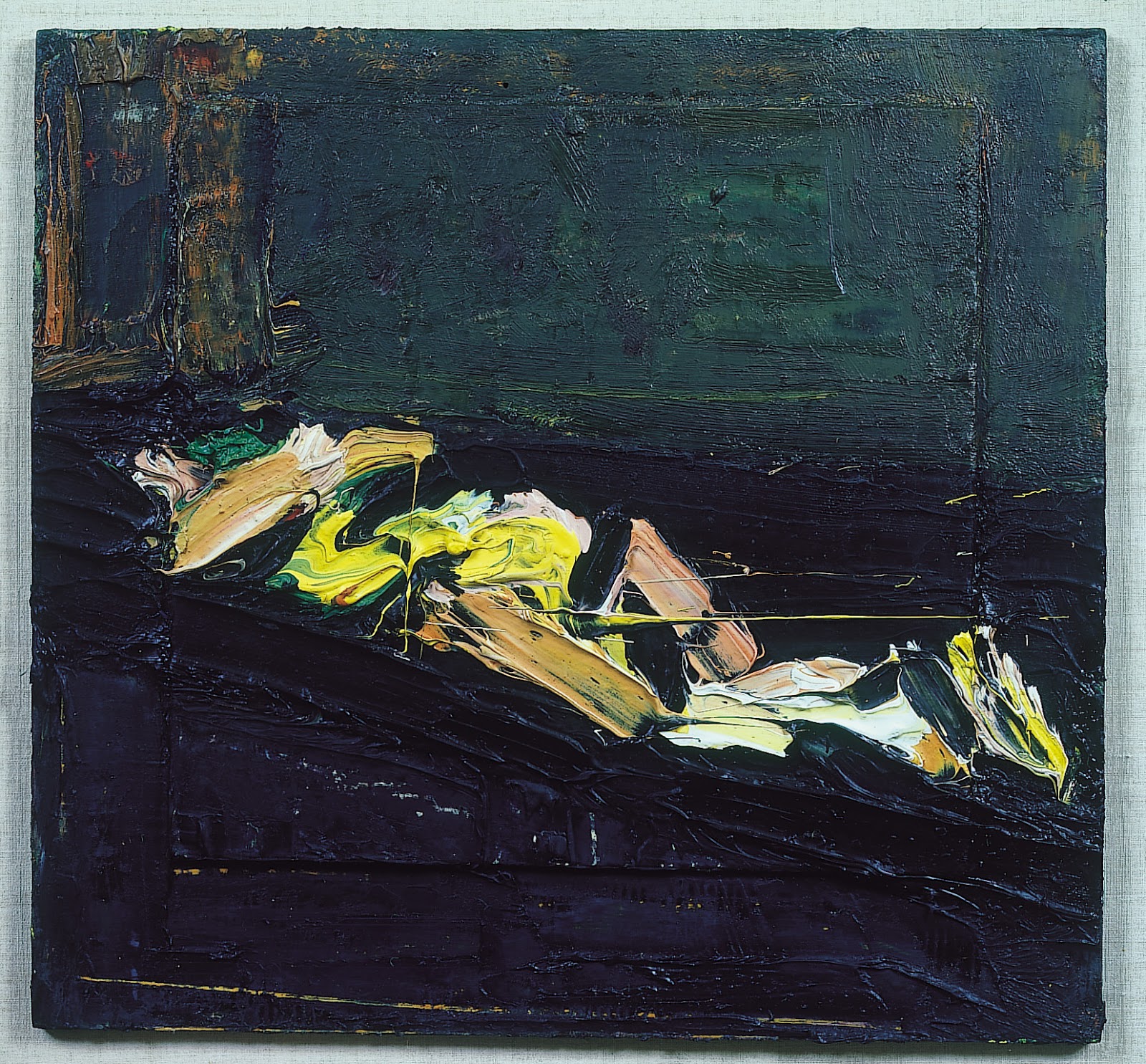12/02/12
The Mystery of Appearance: Conversations Between Ten British Post-War Painters
Haunch of Venison
7 December 2011 – 18 February 2012
It might at first seem a little unadventurous to put on a show featuring artists for whom major retrospectives are concurrently running not so far across town (in this case, David Hockney at the Royal Academy and Lucian Freud at the National Portrait Gallery), but Haunch of Venison’s current exhibition, featuring ten of Britain’s most important post-war painters, is worth its weight in gold. Displaying over forty large and small scale paintings and drawings, some on loan from major galleries, others which have not been seen in public for many years (including Frank Auerbach’s Primrose Hill, Winter Sunshine (1962-64)), the exhibition seeks to offer a fresh view on the works, methods, and personal interactions between Michael Andrews, Frank Auerbach, Francis Bacon, Patrick Caulfield, William Coldstream, Lucian Freud, Richard Hamilton, David Hockney, Leon Kossoff and Euan Uglow.

The first room concentrates on nudes, and, although some are indeed highly abstracted through the artists’ use of thick impasto paint, they nevertheless celebrate the continued dedication to figurative subjects by these resilient painters during a period when abstraction was so ‘à la mode’. Thus, for example, the visitor can compare the diametrically different, but yet equally enchanting, works by Freud (Girl on a Turkish Sofa, 1966) and Auerbach (Reclining Figure, 1972), which, although similarly sized and posed, demonstrate the extremely varied possibilities offered by the same medium when applied with such different technique. Consisting merely of a few dabs of orange, yellow and white oil paint on a darkly grounded board, Auerbach’s figure nevertheless bears just as much a sense of weight, and is just as recognisable as a figure, as Freud’s intricately detailed girl, with her dirty feet and oversized, twisted and bared bottom.

This exploration of texture and technique continues throughout the other rooms, with the second gallery including a mix of both landscapes and portraits, all absolutely relishing in the joy of daubing on the paint as thickly as possible. Kossoff’s Self Portrait II (1972), whilst recognisable as a face from afar, becomes an indistinguishable sea of colour and pigment as one approaches. Nearby, his Seated Woman No. 2 (1959) is so substantially besmeared with deep brown paint that it takes no great leap of the imagination to see the logical progression to contemporary abject works of art employing not paint, but excrement. There is something extremely tactile about this piece, as if all tools might have been laid aside, and Kossoff have employed his hands. It is playful and fun, like something a young child might proudly produce for his parent.

In contrast to this, the third room makes reference to the continued influence of the Old Masters, exemplified, perhaps predictably, by Bacon’s Pope I – Study after Pope Innocent X by Velázquez (1951), reminding the visitor that these painters, whilst breaking new ground, were, nevertheless, historically and technically educated in their field. Upstairs is ample further evidence of this, with a range of studies, showing both method and skill, including a variety by Caulfield, in which his mark up grids and hastily scribbled notes regarding tone and colour are clearly visible.

As the subtitle to the exhibition highlights, however, it is the conversations between these men which perhaps offers us most insight into the progression of British painting in the post-war period. Downstairs in the bookshop are a delightful row of photographs by Bruce Bernard, showing the artists in their studios, both at work and play, and the catalogue to accompany the exhibition contains an enlightening essay considering how their relationships impacted on their work, as well as some insightful writings by the artists themselves. Thus, whilst the range of works by Hockney and Freud in their own personal shows cannot be expected to be matched, it is nevertheless a privilege to be able to see them here, set amongst their contemporaries, contextualised and reevaluated, and displayed in the impressive newly renovated Bond Street gallery space taken over by Haunch of Venison last autumn.
Images:
Frank Auerbach
Primrose Hill, Winter Sunshine
1962-64
Oil on board
104.1 x 144.8 cm
Private Collection
© Frank Auerbach
Photo: Peter Mallet
Frank Auerbach
Reclining Figure
1972
Oil on board
38.1 X 40.6 cm
Private Collection, N.Y.
© Frank Auerbach
Leon Kossoff
Willesden Junction, Summer No.1
1966
Oil on board
91.4 x 152.4 cm
Private Collection
©Leon Kossoff
Francis Bacon
Pope I – Study after Pope Innocent X by Velasquez
1951
Oil on canvas
197.8 x 137.4 cm
Aberdeen Art Gallery & Museums Collections
©The Estate of Francis Bacon